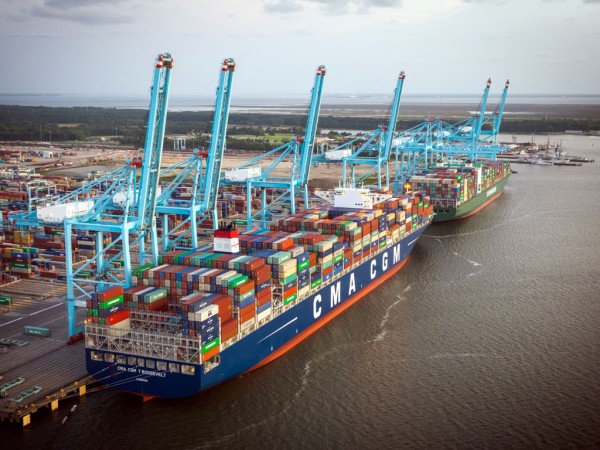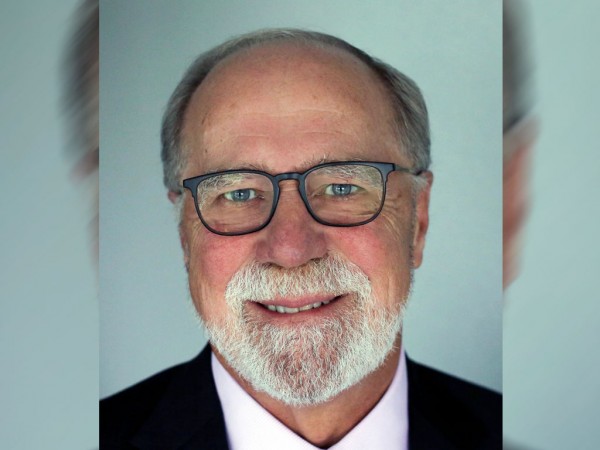As the Port of Virginia moves toward surpassing the 3 million 20-foot-equivalent container unit throughput milestone this year, the head of the Virginia Port Authority is most encouraged that vast infrastructure enhancements not only are supporting record activity but, moreover, that these historic volumes are moving with greater efficiency.
John F. Reinhart, the Virginia Port Authority’s chief executive officer and executive director, told AJOT that, while he is enthusiastic about volume growth, he is even prouder of double-digit gains in efficiencies in moving trucks in and out of Port of Virginia container terminals.

Even as volumes remained at near-peak levels as major infrastructure expansion work continued advancing, average traditional truck turn times at the Virginia International Gateway in Portsmouth decreased by more than 33 percent in December and January from 65.5 minutes in October and November, putting them at 41.8 minutes – considerably less than the 60-minute industry standard. At Norfolk International Terminals, the VPA’s largest facility, average turn time improved to 52.6 minutes.

“Another thing for us last year was that we did not have any chassis issues,” Reinhart said. “We had our chassis pool running really well. We brought in another 1,000 chassis before peak. So we didn’t have any of that chassis challenge that some ports experienced.”
At the same time, The Port of Virginia has been assertively managing moves of empty containers to optimize capacity and drive efficiencies during construction at its two main container terminals.
The Port of Virginia handled a record of more than 2.85 million TEUs of containerized cargo in calendar 2018, and, whereas that figure represents a mere gain of 0.5 percent over calendar 2017, Reinhart sees the 3 million TEU mark in sight for this year.
“We can bring in more empties now, loads are still coming in quite strong,” Reinhart said. “We did not grow as fast as the other East Coast ports last year. Part of that was managed growth.
“This should be the year we bust through 3 million [TEUs],” said Reinhart, a former Maersk Line chief executive officer who just entered his sixth year at the VPA helm. “Our plans are all coming together. That’s the exciting part.
“We’ve pivoted toward being a little more aggressive toward growth now that we’re bringing on our infrastructure,” he said. “So you’ll see us continue to try to build our volume momentum. And, secondly, we’re also very active and have been active the last three years on economic development across the state.”
By mid-2019, the three-year, $320 million expansion program doubling capacity at the highly automated Virginia International Gateway, or VIG, should be completed, facilitating full benefits from its contingent of eight super-post-Panamax ship-to-shore cranes and dozens of rail-mounted gantries, or RMGs, as well as enhanced rail and gate infrastructure. VIG already has proven its ability at a trio of ultralarge berths to handle container vessels with capacities of more than 14,000 TEUs – the largest boxships to call the U.S. East Coast.
At the 567-acre Norfolk International Terminals facility, or NIT for short, where three ultralarge container berths also are already available along 50-foot-deep water, the RMG fleet is growing to 60 units as construction moves into a second phase, while truck traffic is managed through a reservation system and a 26-lane gate complex feeding directly into the Interstate 564 intermodal connector. A new Navis N4 terminal operating system is being implemented at all VPA terminals.
Asked who is to thank for the progress, Reinhart responded, “The team, I think first, for executing the infrastructure developments while operating through that environment, some of the motor carriers and the [ocean] carriers themselves for their patience with us as we work through these historic investments to create the capacities and the capabilities that they want for the future. And, obviously, I have to thank the administration and the legislature – and our board – for having the faith in us to give us the financial support to make these things happen.”
Looking to the future, the Wider, Deeper, Safer endeavor bodes to bring a broadened 55-foot-deep channel to Norfolk Harbor within the next half-dozen years.
“There’s great progress under way there,” Reinhart said of the channel project, which has entered the preliminary engineering and design phase, with plans to this summer solicit proposals for the first phase of dredging, to commence in January 2020 and be completed “by 2024, or 2025 to give a bit of room,” he said.
The port, which already offers clear 50-foot draft, looks to be able to be offer still safer navigation for vessels, including megacontainerships.
Reinhart said the ability for two such big ships to pass each other, eliminating one-way traffic limitations, is “a big part” of the project.
“That really is something that gives efficiency to the carriers, because they don’t have to wait,” he said. “They’re not trapped inside or waiting outside for that four hours right now. And, if you think about it, that fluidity eliminates fuel burn, it eliminates waits out in the ocean, it just allows us to be kinda movin’ it all the time, where some other ports might have a chokepoint in their channels.”
Reinhart pointed out that the better fluidity is expected to become increasingly vital as stricter International Maritime Organization marine fuel rules take effect at the start of 2020.
“That will keep pushing the carriers to the larger ships coming to the East Coast,” he said, “so then being able to have them pass each other is one less impediment.”
Speaking of impediments, Reinhart commented, “Obviously, we are hopeful that there is a trade pact that comes forward between the U.S. and China and that the tariffs don’t create a drag on the economy and a drag on the flow of freight. We’re monitoring that very closely, because that could be an impediment to all of the ports in the country.”
He hopes further federal government shutdowns can be avoided.
“That’s two big things there that we’re monitoring very closely that are risks,” Reinhart said. “I think we de-risk a lot of the knowns with our infrastructure plans, our dredging plans, our capital plan and the way we’re using technology today. We just have to be cognizant that those headwinds are out there, and we’re hopeful that our country finds solutions to both.”
It seems fitting that Virginia, which traces its port history back to the 1607 arrival of British colonists at Jamestown, is slated to be home to the 2019 edition of the American Association of Port Authorities’ annual convention and expo with a theme of Revolutionizing America’s First Port. The hemispheric gathering is to be hosted by the VPA Oct. 13-16 in Norfolk.





